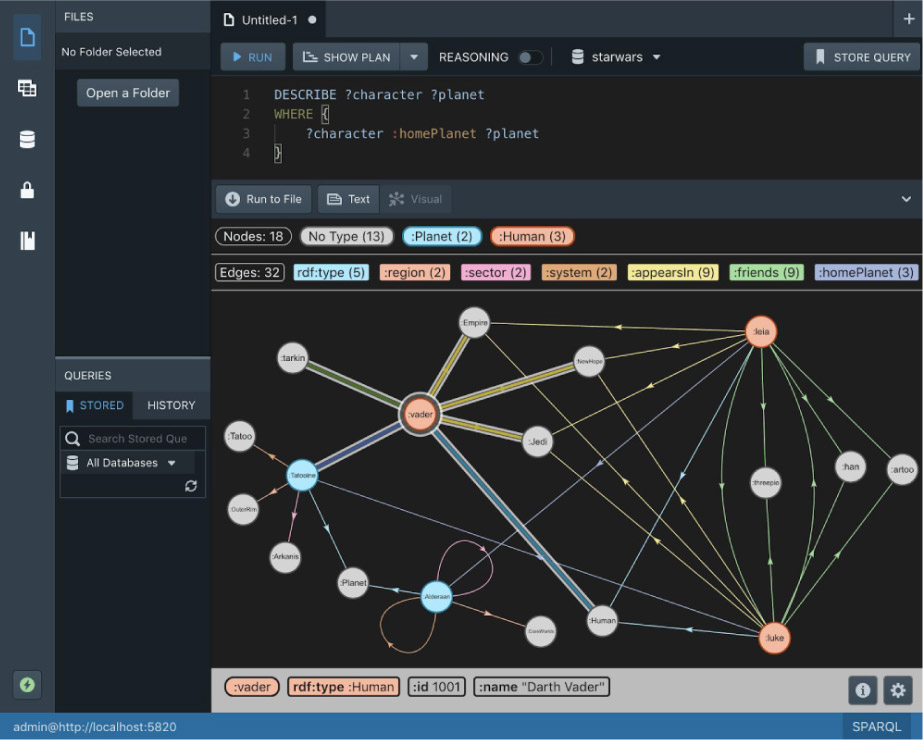Stardog’s Enterprise Knowledge Graph platform is underpinned by a graph database that offers state-of-the-art performance for both storing RDF data and executing SPARQL queries. Stardog collects detailed statistics from the graph structure to compute accurate cardinality estimations for Stardog’s sophisticated query optimizer. Our performance is tested daily on many publicly available benchmarks such as BSBM (Berlin SPARQL Benchmark), SP2B (SPARQL Performance Benchmark) and LUBM (Lehigh University Benchmark), along with many custom benchmarks developed by the Stardog team based on real-world workloads from our users.
Stardog’s query engine provides low latency and high throughput query performance for transactional queries without sacrificing the performance of analytical queries. Stardog can bulk load data into a graph at 500,000 triples per second on a modest server and can answer thousands of queries per second in a single Stardog node. Deploying a multi-node Stardog High Availability Cluster provides higher throughput in addition to increased robustness and resilience.
The mechanism for scaling in Stardog’s Enterprise Knowledge Graph platform also is materially different from a graph database. Graph databases typically either only provide a scale-up solution or use partitioning schemes developed for key-value stores that do not work very well for graph queries. Stardog’s virtualization capability already provides an alternative scalability approach by using external data sources, but Stardog can also virtualize other Stardog installations as well as generic SPARQL endpoints. This gives users the ability to scale out their knowledge graph up to 1 trillion triples, all while enjoying sub-second query times and up to a 98% cost savings when compared with traditional approaches.
-
IN PRACTICE
Casalini Libri built a collaborative platform for information management, supporting data contributions from libraries worldwide. Out of their initial 20 US-based library partners, they process, link, and maintain 24 billion triples (about 2 TB of data) within Stardog, and as their solution grows, each new library will contribute up to 2 billion more triples to the expanding knowledge base.

Get started with Stardog now
Start building your Enterprise Knowledge Graph today. Get your 30-day fully featured Trial.
Start today

